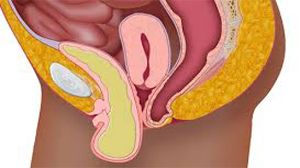Modified TAPP Technique for Acute Incarcerated Hernia
Add to
Share
19 views
Report
2 days ago
Description
Laparoscopic surgery has redefined the management of complex hernias, especially in acute presentations where precision and timing are critical. At World Laparoscopy Hospital (WLH), a global leader in minimal access surgery, the Modified Transabdominal Preperitoneal (TAPP) Repair technique has evolved into a reliable and safe approach for treating acute incarcerated abdominal hernias. Under the expert guidance of Dr. R. K. Mishra, this procedure combines advanced laparoscopic skills with innovative modifications designed to improve patient outcomes and reduce recurrence. Understanding Acute Incarcerated Abdominal Hernia An incarcerated abdominal hernia occurs when a portion of the intestine or omentum becomes trapped within a hernial defect, causing obstruction, pain, and vascular compromise. In acute cases, early surgical intervention is vital to prevent strangulation and bowel necrosis. The laparoscopic TAPP approach allows surgeons to evaluate bowel viability, perform reduction under vision, and reconstruct the defect with precision — all through minimal incisions. Step-by-Step Modified TAPP Repair Technique 1. Patient Positioning and Preparation The patient is placed in a supine position with slight Trendelenburg tilt, which facilitates the displacement of the bowel away from the lower abdomen. After induction of general anesthesia, standard aseptic draping and port placement are performed. 2. Port Placement A 10 mm umbilical camera port is introduced using an open (Hasson) technique to ensure safety in the acute abdomen. Two 5 mm working ports are then positioned laterally on each side, maintaining ergonomic access to the hernia site. 3. Diagnostic Laparoscopy Initial exploration confirms the diagnosis and assesses bowel viability. The incarcerated content is carefully inspected for color, peristalsis, and mesenteric pulsation. If necessary, gentle irrigation with warm saline helps assess recovery of ischemic segments. 4. Reduction of Hernia Contents Using atraumatic graspers, the incarcerated bowel or omentum is reduced gently from the hernial sac under direct vision. In difficult cases, a modified traction-countertraction technique pioneered at WLH is applied to minimize serosal injury. If adhesions are dense, sharp dissection using laparoscopic scissors or energy-based devices ensures safe reduction without compromising the bowel. 5. Peritoneal Incision and Preperitoneal Dissection A curvilinear peritoneal incision is made 2–3 cm above the hernia defect, followed by careful creation of the preperitoneal space using a combination of blunt and sharp dissection. This modification provides a wider field for mesh placement and better coverage of potential weak areas. 6. Hernia Sac Management The sac is either reduced or excised depending on its size and content. At WLH, the “modified sac inversion” technique is often used to avoid unnecessary dissection around vital structures, particularly in recurrent or complex hernias. 7. Mesh Placement A large, lightweight polypropylene or composite mesh is tailored to cover all potential hernial orifices. The mesh is positioned flat without folds, ensuring adequate overlap beyond the defect margins. Non-tacking fixation or limited absorbable tacks are preferred to minimize chronic pain and foreign body sensation. 8. Peritoneal Closure The peritoneal flap is closed over the mesh using a continuous barbed suture technique — a WLH modification that ensures airtight closure and prevents mesh exposure to bowel loops. This step restores the anatomy and prevents postoperative adhesions. 9. Final Inspection and Desufflation After verifying hemostasis and mesh position, the pneumoperitoneum is released under vision. All ports are removed, and incisions are closed meticulously to ensure minimal scarring. Advantages of Modified TAPP at WLH Comprehensive visualization of intra-abdominal organs, ensuring safe reduction of strangulated contents. Simultaneous management of bilateral or occult hernias. Minimized postoperative pain due to atraumatic dissection and limited fixation. Early recovery and discharge, usually within 24–48 hours. Reduced recurrence rates due to optimized preperitoneal mesh coverage. Expertise at World Laparoscopy Hospital The Modified TAPP Repair for incarcerated hernias at World Laparoscopy Hospital is part of an advanced surgical protocol developed through decades of experience. Surgeons from over 150 countries are trained here under real-time mentorship, gaining hands-on exposure to managing complex hernias laparoscopically. The hospital’s simulation labs and live surgical workshops empower trainees to master techniques that balance innovation, safety, and precision. Conclusion The Acute Incarcerated Abdominal Hernia – Modified TAPP Repair represents the evolution of minimally invasive hernia surgery. The step-by-step refinements introduced and practiced at World Laparoscopy Hospital not only make the operation safer in emergency scenarios but also set new benchmarks in laparoscopic excellence. Through advanced training, cutting-edge equipment, and global surgical leadership, WLH continues to shape the future of minimally invasive hernia repair worldwide.
Similar Videos






